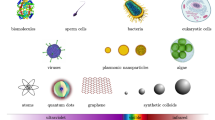Abstract
Non-equilibrium molecular dynamics simulations, of crucial importance in sliding friction, are hampered by arbitrariness and uncertainties in the removal of the frictionally generated Joule heat. Building upon general pre-existing formulation, we implement a fully microscopic dissipation approach which, based on a parameter-free, non-Markovian, stochastic dynamics, absorbs Joule heat equivalently to a semi-infinite solid, and harmonic substrate. As a test case, we investigate the stick–slip friction of a slider over a two-dimensional Lennard-Jones solid, comparing our virtually exact frictional results with approximate ones from commonly adopted dissipation schemes. Remarkably, the exact results can be closely reproduced by a standard Langevin dissipation scheme, once its parameters are determined according to a general and self-standing variational procedure.






Similar content being viewed by others
Notes
The correlated random noise sequence, to be applied to the boundary layer atoms, has been generated at the beginning of the simulation using the rules (15). If we have to correlate in time a single random number sequence, we can generate a set of uncorrelated numbers in Fourier space, multiply them by the Fourier transform of the correlation matrix and make the inverse transform to get back to the real space [19].
References
Persson, B.N.J.: Sliding Friction. Springer, Berlin (1998)
Robbins, M.O., Müser, M.H.: Computer simulations of friction, lubrication, and wear. In: Bhushan, B. (ed.) Modern Tribology Handbook Vol. I. CRC Press, New York (2001)
Vanossi, A., Manini, N., Urbakh, M., Zapperi, S., Tosatti, E.: Modeling friction: from nano to meso scales. Sub. Rev. Mod. Phys. (2012) p. arXiv:1112.3234v1
Li, Q., Dong, Y., Perez, D., Martini, A., Carpick, R.W.: Speed dependence of atomic stick-slip friction in optimally matched experiments and molecular dynamics simulations. Phys. Rev. Lett. 106(1), 126101–00 (2011)
Zwanzig, R.: Nonequilibrium statistical mechanics. Oxford University Press, New York (2001)
Medyanik, S.N., Liu, W.K., Sung, I.-H., Carpick, R.W.: Predictions and observations of multiple slip modes in atomic-scale friction. Phys. Rev. Lett. 97, 136106 (2006)
Benassi, A., Vanossi, A., Santoro, G.E., Tosatti, E.: Parameter-free dissipation in simulated sliding friction. Phys. Rev. B 82, 081401(R) (2010)
Maradudin, A.A., Montroll, E.W., Weiss, G.H., Ipatova, I.P.: Theory of lattice dynamics in the harmonic approximation. In: Solid State Physics, Academic Press, New York (1971)
Rubin, R.J.: Statistical dynamics of simple cubic lattices. Model for the study of brownian motion. J. Math. Phys. 1, 309 (1960)
Campana, C., Müser, M.H.: Practical greens function approach to the simulation of elastic semi-infinite solids. Phys. Rev. B 74, 075420 (2006)
Luan, B.Q., Hyun, S., Molinari, J.F., Bernstein, N., Robbins, M.O.: Multiscale modeling of two-dimensional contacts. Phys. Rev. E 74, 046710 (2006)
Zwanzig, R.: On the identity of three generalized master equations. Physica 30, 1109 (1964)
Mori, H.: Transport, collective motion, and brownian motion. Prog. Theor. Phys. 33, 423 (1965)
Evstigneev, M., Reimann, P.: Langevin equation for a system nonlinearly coupled to a heat bath. Phys. Rev. B 82, 224303 (2010)
Magalinskii, V.B: Dynamical model on the theory of the (quantum) Brownian motion. Sov. Phys. JETP 9, 1381 (1959)
Li, X., E, W.: Variational boundary conditions for molecular dynamics simulations of crystalline solids at finite temperature: Treatment of the thermal bath. Phys. Rev. B 76, 104107 (2007)
Kantorovich, L.: Generalized Langevin equation for solids. I. Rigorous derivation and main properties. Phys. Rev. B 78, 094304 (2008)
Kantorovich, L., Rompotis, N.: Generalized Langevin equation for solids. II. Stochastic boundary conditions for nonequilibrium molecular dynamics simulations. Phys. Rev. B 78, 094305 (2008)
Lü, K., Bao, J.-D.: Numerical simulation of generalized Langevin equation with arbitrary correlated noise. Phys. Rev. E 72, 067701 (2005)
Vanossi, A., Braun, O.M.: Driven dynamics of simplified tribological models. J. Phys. Cond. Mat. 19, 305017 (2007)
Braun, O., Naumovets, A.: Nanotribology: microscopic mechanisms of friction. Surf. Sci. Rep. 60, 79 (2006)
Luan, B.Q., Robbins, M.O.: Hybrid atomistic/continuum study of contact and friction between rough solids. Trib. Lett. 36, 1 (2009)
Acknowledgments
A discussion with L. Kantorovich is gratefully acknowledged. This study is part of Eurocores Projects FANAS/AFRI, sponsored by the Italian Research Council (CNR), and of FANAS/ACOF. It is also sponsored by the Italian PRIN Contracts No. 20087NX9Y7 and No. 2008Y2P573, and by the Swiss National Science Foundation SINERGIA Project CRSII2 136287\ 1.
Author information
Authors and Affiliations
Corresponding author
Rights and permissions
About this article
Cite this article
Benassi, A., Vanossi, A., Santoro, G.E. et al. Optimal Energy Dissipation in Sliding Friction Simulations. Tribol Lett 48, 41–49 (2012). https://doi.org/10.1007/s11249-012-9936-5
Received:
Accepted:
Published:
Issue Date:
DOI: https://doi.org/10.1007/s11249-012-9936-5




